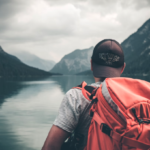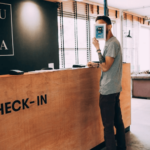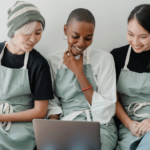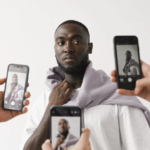Marketing through influencers has totally revolutionized the hospitality industry. Traditionally, hotels and resorts have fallen on popular public figures to endorse their services. In the current landscape, we’ve moved from conventional celebrity endorsers to new innovative digital collaborations. Influencers have become strong marketing tools through social media. They provide an authentic touch that makes their content resonate with their target audiences. In 2023, the influencer market worldwide amounted to an estimated $16.4 billion and is expected to hit $24 billion by the end of 2024.
Let’s discuss how hospitality businesses use influencers to reach the right audiences and drive engagement.
The Role of Influencer Marketing in the Hospitality Industry
Building Trust and Authenticity
Most potential hotel guests rely on recommendations from someone trustworthy. An influencer can suggest hotels because there is a certain affinity created with the followers. Influencer marketing, being a recent tool, renders better results as authentic content is much more engaging than a standard advertisement.
- Murad Osmann (@muradosmann)
Known for his “Follow Me To” photo project, in which he’s pictured holding the hand of his wife in breathtaking locations around the world, Murad creates visually appealing content that fuels the dream of traveling.
- Chris Burkard (@chrisburkard)
Sharing breathtaking landscapes and extreme sports adventures, he is genuine in his expression of the beauty of nature, works on trust, and has an incredible connection with his audiences.
- Jennifer Tuffen (@izkiz)
Izkiz, also known as Jennifer, shares colorful photos and videos of her journeys, sure to capture the view and culture behind them.
- Jack Morris (@jackmorris)
Jack, once a part of DoYouTravel, now focused on personal branding, sheds light on the most luxurious travel destinations and living illuminations with his photographs. His stunning photos and authentic traveling stories have garnered Jack a fanatical following.
- The Bucket List Family (@thebucketlistfamily)
A travel blog by a family that shares its family travel experiences from around the world, equipped with travel tips and advice for traveling with families. That’s the main charm of the content: genuine, with the flavor of common people.
- Alex Strohl (@alexstrohl)
Alex has built a reputation for taking cinematic travel photographs that best capture the spirit of our planet’s most remote and wild locations. His stunning photographs and storytelling really captivate people.
Expanding Reach and Exposure
Influencer campaigns make close, authentic engagements possible that can’t be delivered with traditional advertising. Some great examples in this industry include:
- Sun Peaks Resort and Callum Snape: A Canadian adventure photographer, he showcased the resort’s beautiful vistas to attract nature lovers.
- Marriott with Jeanna Smith: Marriott turned a flash mob surprise dance party into one of the luckiest people—with YouTube influencer Jeanna Smith—into a moment that went viral.
- Moxy Hotels, and Taryn Southern: Moxy Hotels hired YouTube star Taryn Southern to deliver a vivacious and generational buzz.
- St. Regis and Naomi Davis: St. Regis collaborated with mommy influencer Naomi Davis (@taza) on family travel.
- Giraffe Manors and Luxury Travel Micro-Influencers: Giraffe Manors were taken up by luxury travel micro-influencers to promote their unique experience.
- Fairmont Hotels & Resorts: Fairmont works with influencers to enhance their reach and visibility.
- Ritz-Carlton with Chris Aznar & Jack Morris: Activating various members of the audience, Ritz-Carlton brought in micro-influencer Chris Aznar and world traveler Jack Morris.
The following are some of the strategies that increase via influencer partnerships:
- Choose the influencers whose followers are in your target market.
- Collaborate to create interesting, engaging content on the brand’s unique differentiators.
- Utilize influencers to document the event and live experiences.
- Encourage your influencers to share personal stories with your brand.
- Use engagement metrics and analytics to measure the campaign’s performance.
- Develop sustainable relationships with influencers for continued brand representation.
- Use influencer content in your marketing strategy.
Driving Engagement and Interaction
Influencers use a combination of techniques to create decent, engaging content:
- Share a personal story
- Create high-quality visuals
- Make it interactive with features such as polls and Q&A sessions.
- Host real-time sessions
- Generate behind-the-scenes content
- Work with other influencers
- Encourage user-generated content.
High employee engagement rates can prove helpful to hospitality businesses in the following manner:
- More exposure to the brand
- Enhanced customer loyalty
- More booking rates
- Online reputation management is improved.
- Greater return on investment
Types of Influencers in Hospitality
Mega and Macro Influencers
Mega and macro-influencers count hundreds of thousands to millions of followers. These provide huge reach and are great for huge campaigns that increase brand awareness. For example, Jack Morris (@jackmorris), whose following reaches the millions, is a great travel influencer, hawking luxury travel experiences at their finest.
Micro and Nano-Influencers
Micro-influencers (10,000-100,000 followers) and nano-influencers (less than 10,000 followers) more often than not carry a niche following but with a lot of engagement. The basis of their relationship with their followers is trust. A great example of this would be Giraffe Manor, which reaches a more specific audience when using micro-influencers in luxury travel and adds that extra touch of interaction.
Strategies for Effective Influencer Collaborations
Identifying the Right Influencer
Choosing the right influencer is the most crucial step in the whole process. In fact, choosing the wrong influencer is one of the most common influencer marketing mistakes. A couple of essential criteria to reflect on are:
- Alignment with brand values
- Audience demographics
- Rate of engagement
- Content quality
- Previous experience in working together
- Relevance to campaign goals
Here are some tools and platforms for discovering and vetting influencers:
- Influence.co: Connects brands to influencers and provides detailed performance and audience demographics analytics.
- Upfluence: Advanced algorithms find the best fit between brands and influencers based on content and engagement metrics.
- AspireIQ: All-in-one platform for influencer discovery, management, and campaign tracking.
- Traackr: Helps discover and nurture influencer relationships through powerful information and insights.
- HYPR: Has huge databases that identify influencers, along with analytical tools to measure their influence.
- Klear: Analyzes influencer profiles’ details and their audience engagement level.
Create a Successful Campaign
It is necessary to set clear objectives while working on influencer marketing. Companies’ goals and objectives should be increasing bookings, brand building, brand advocacy, and/or better customer engagement. Clear objectives provide simplicity to the directions and purpose within which a campaign is to operate and be measured.
A well-articulated creative brief and guidelines help in achieving consistency and brand messaging. Key elements include:
- Goals of campaigns
- Target group
- Key messages
- Content requirements
- Brand voice and style
- Posting schedule
- Performance measures
Monitoring and Measuring Success
In influencer marketing, marketers can track engagement, reach, impressions, and conversions to understand the campaign’s effectiveness. Metrics thus inform one about how a campaign is performing and what effect that has on the relevant target audience.
Tracking mechanisms and strategies for influencer campaigns:
- Google Analytics: Tracks and monitors the website traffic and conversions coming in from influencer campaigns.
- Sprout Social: Monitors and logs social media conversations and statistics.
- Hootsuite: Generates and analyzes social media metric-based scheduling posts.
- BuzzSumo: Finds the best-performing content and measures influencer impact.
- Socialbakers: An all-in-one solution for advanced social media analytics and competitive benchmarking, made.
Future Trends in Influencer Marketing for Hospitality
Explosive Growth of Short-form Videos
TikTok for hotels is taking off. That’s why short videos like TikTok videos and Instagram Reels are astonishingly important as a format. These small content pieces manage to be potent enough to engage users swiftly and visually, which is all that high interaction rates are about. On average, key influencers spend 52 minutes a day on the platform. Today, all this is what marketers need to use on these channels to create dynamic, involving messagesᅳthat are exactly what today’s audience likes. In fact, influencer marketing trends show video content has higher interaction and conversion rates than static posts.
Increasing Use of User-Generated Content
User-generated content (UGC) has a lot of twang in influencer marketing, owing to the endorsement that the sharing of guests carries with it. UGC serves not just as authentic testimonials but also as a way to expand brand coverage organically. Marketing strategies built on UGC are perceived as credible. Recent studies show consumers are 2.4 times more likely to view UGC as authentic than brand-created content. Marketers should catch this trend by making campaigns where real guest experiences are shared.
Emphasis on Local and Sustainable Travel
Influencers are beginning to make inroads into the hotel industry with messages on sustainable local tourism efforts and experiences. This has been evident as influencers continue to share unique local experiences and eco-friendly practices in line with the fast-growing preference among consumers towards sustainable travel. Current trends also indicate that 71% of travelers globally will likely book accommodations with eco-friendly practices. Rich, for marketers, is the approach to tapping audiences concerned with environmental sensitivity.
Conclusion
“Change is constant.” Currently, influencer marketing has become one of the most vital approaches in the hospitality industry, where brands can convey their message to a highly engaged audience. This shift in the digital landscape has emphasized the importance of influencers. Influencer marketing provides a new dimension of opportunities for marketers to run connected and effective marketing campaigns. Reach out to a hospitality social media agency for more details on how to best optimize your influencer campaigns.





